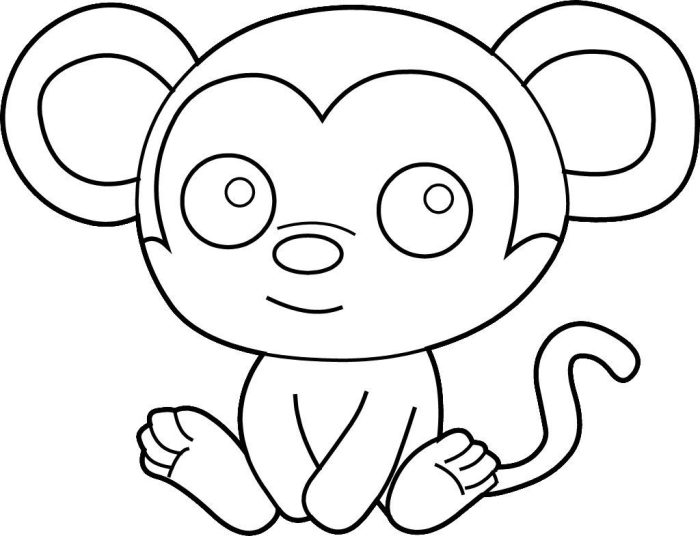Types of Trees for Coloring Books: Coloring Book Tree For Kids

Coloring book tree for kids – Choosing the right trees for a children’s coloring book involves considering both visual appeal and varying levels of complexity for different age groups. Simple designs encourage younger children, while more intricate trees offer a challenge for older kids. The following selection provides a range of options suitable for diverse skill levels.
Tree Types and Descriptions
Here are five tree types, each described with details suitable for coloring book design, considering their unique characteristics and coloring difficulty.
Kids love coloring trees, from simple leaf designs to intricate branching patterns. Expanding their horizons, you might introduce them to the unique flora of the American Southwest with resources like arizona coloring book pages , which offer a different perspective on tree coloring. After exploring those Southwestern landscapes, they can return to their familiar tree coloring books with a newfound appreciation for diverse plant life.
| Tree Type | Description | Difficulty Level | Suggested Age Range |
|---|---|---|---|
| Simple Deciduous Tree | A basic tree with a thick, slightly irregular trunk, short, slightly curved branches extending upwards, and simple, rounded leaves. The leaves can be clustered together for a fuller look. The trunk can be colored brown, and the leaves in shades of green, yellow, or red depending on the season. | Easy | 3-5 years |
| Palm Tree | A tall, slender trunk with a slightly flared base. The top features a crown of long, frondy leaves that curve gracefully downwards. The trunk can be a light brown or grey, and the leaves a vibrant green. The fronds can be individually colored or left as a single green mass. | Medium | 5-7 years |
| Pine Tree | A tall, straight trunk with numerous branches extending outwards and upwards. The branches are covered in clusters of short, needle-like leaves. The trunk is a dark brown, and the needles a deep green. The triangular shape of the tree is relatively simple to draw and color. | Medium | 6-8 years |
| Oak Tree | A sturdy tree with a thick, gnarled trunk and many strong, spreading branches. The leaves are lobed, with rounded edges, and are clustered along the branches. The trunk can be a dark brown, almost black in places, with texture lines to add detail. The leaves can be a deep green, with hints of lighter shades for variation. | Hard | 8-10 years |
| Willow Tree | A graceful tree with a slender, bending trunk and long, weeping branches that droop downwards. The leaves are long and narrow, lanceolate in shape. The trunk is a light brown, almost silver in places, and the leaves are a light green. The drooping branches present a more complex challenge for coloring. | Hard | 9-12 years |
Adding Details to Tree Coloring Pages

Adding small details to a tree coloring page can significantly enhance its visual appeal and engage children’s creativity. Careful consideration of the added elements ensures they complement the tree, rather than distracting from it. Overly complex additions can overwhelm young artists, so a balanced approach is key.
Five Elements to Enhance Tree Coloring Pages
The following table Artikels five elements that can be incorporated into tree coloring pages, along with suggestions for their integration to avoid overwhelming the main subject. These elements provide opportunities for children to explore different aspects of nature and expand their artistic expression.
| Element | Description of its Integration |
|---|---|
| Birds | Small, simple birds perched on branches or flying near the tree’s canopy can add a lively touch. Avoid overly detailed bird designs; stick to basic shapes and simple patterns. Consider positioning the birds strategically, perhaps near the leaves or nestled amongst the branches, to avoid visual clutter. A single bird, or a small cluster of two or three, is generally sufficient. |
| Animals | Similar to birds, small animals like squirrels, rabbits, or chipmunks can be incorporated near the base of the tree or within its surroundings. Keep the animal designs simple, using basic shapes and avoiding excessive detail. The size of the animal should be proportionate to the tree; a large animal might overpower the illustration. A single animal interacting with the tree, such as a squirrel climbing a branch, can be very effective. |
| Flowers | Wildflowers or blossoms can be added to the base of the tree or strategically placed around the trunk. Consider using a limited palette of flower colors that complement the tree’s color scheme. Avoid overly detailed flower designs; a few simple flowers can add a pop of color without being distracting. Ensure the flowers are appropriately scaled to the tree. |
| Seasons | Different seasons can be suggested through simple additions. For autumn, add falling leaves in various colors. For winter, incorporate snowflakes or a light dusting of snow on the branches. For spring, add budding leaves or new shoots. For summer, add lush, full foliage. These seasonal elements should be subtle, enhancing the overall scene rather than overpowering the tree itself. |
| Sun and Clouds | A simple sun or clouds in the sky above the tree can create a complete scene and add context. The sun can be a simple circle with rays, and clouds can be simple puffy shapes. These additions should be placed above the tree, ensuring they do not obscure the main subject. Using a light color for these elements helps to maintain balance. |
Creating Engaging Tree-Themed Activities

Enhancing a tree-themed coloring book with interactive activities transforms a passive coloring experience into an active learning journey. These activities cater to different learning styles, fostering creativity, observation skills, and an appreciation for nature. The following activities are designed to be engaging and age-appropriate for children aged 3-8.
Tree Identification Matching Game
This activity helps children learn to recognize different types of trees. Prepare a set of cards, each showing a picture of a common tree (oak, maple, pine, etc.) and its corresponding leaf. Children match the pictures, learning to associate leaf shapes with specific tree types. This activity strengthens visual discrimination skills and expands their knowledge of the natural world.
For younger children, using simplified illustrations and fewer tree types is recommended. Older children can be challenged with more complex leaf structures and a wider variety of trees.
Leaf Rubbing Art
Leaf rubbing is a simple yet effective way to explore tree textures and shapes. Gather various leaves from different trees. Place a leaf under a sheet of paper and rub the side of a crayon over the paper, revealing the leaf’s imprint. This tactile activity engages multiple senses, encouraging children to observe the variations in leaf textures and sizes.
The resulting artwork provides a tangible representation of their nature exploration. The educational benefits include developing fine motor skills and appreciating the diversity of plant life.
Nature Walk and Tree Observation, Coloring book tree for kids
A nature walk offers a hands-on experience of exploring trees in their natural environment. Before the walk, discuss different parts of a tree (trunk, branches, leaves, roots) and encourage children to look for specific features. During the walk, encourage them to observe different tree types, sizes, and shapes. They can collect fallen leaves or draw sketches of interesting trees they encounter.
This activity promotes observation skills, strengthens their understanding of tree anatomy, and fosters an appreciation for the natural world. Remember to emphasize safety and responsible behavior during the nature walk. For younger children, keeping the walk short and focusing on a few key observations is ideal. Older children can be challenged with more detailed observations and tasks, such as measuring tree trunk circumference or identifying different types of bark.


